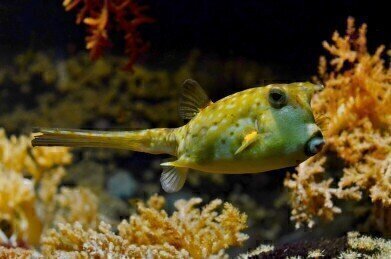Environmental Laboratory
Aerial Survey Reveals Worst Bleaching Ever Seen on the Great Barrier Reef
May 04 2016
A new aerial survey conducted by planes and helicopters is revealing the true extent of coral bleaching – and it’s not good news. Professor Terry Hughes of James Cook University took to the skies earlier this year in March to investigate the full extent of bleaching along the Great Barrier Reef and has found it in its worst state in history.
The phenomenon happens when coral becomes overheated and all of the colourful algae which call it home migrate to other areas. This algae not only provides much of the aesthetic beauty of the reef, it also supplies the majority of its energy, as well. Corals which remain bleached for protracted periods of time run the risk of being overrun with seaweed and other harmful organisms, and eventually dying.
“Worst Bleaching in the Region Ever Seen”
Corals are not only striking underwater attractions, they also provide a home and habitat for a myriad of different sea creatures. Furthermore, they can even act as a natural archive of environmental and climate change. However, if they all are so affected by the environment that they become bleached and die off, all three of those functions will cease.
Professor Hughes set out on his expedition in late March, just a few days after the Great Barrier Reef Marine Authority had raised the bleaching threat to level 3, its highest possible alert.
In the first day of his study, he surveyed 179 reefs along more than 600km, the majority of which had suffered from bleaching. He estimated that more 60% of the reefs he saw had fallen prey to the blight. A couple of days later, he surveyed a whopping 400 reefs and reported that a mere 4 of them (1%) were not bleached. Furthermore, he stated that this was the worst bleaching in the region he had ever seen, far surpassing the levels in 1998 and 2002, when similar events took place.
His findings were corroborated by teams on the water, who dived underneath its surface to gain a closer look at the affected corals.
Climate Change to Blame
The overheating of the water due to climate change is thought to be the source of this latest epidemic of bleaching along the Great Barrier Reef. It has most likely been exacerbated by El Niño, which further heightens temperatures below sea level.
The Australian government has come under fire of late for not taking their climate change responsibilities seriously enough, and this latest revelation about the state of the reef is unlikely to aid their cause. Last month, the state of Queensland vowed to enforce reef protection methods by sending out compliance officers to local cane farms. Up until now, such compliance had been voluntary, but a slow response for local farmers has prompted the authorities to act.
Meanwhile, the government is steadfastly refusing to acknowledge the threat posed to the reef, instead claiming it can cope with current climate change and even the pollutant fall-out from the Abbot Point coal station, as well. Professor Hughes is calling on his own nation and others to stop ignoring the problem and take affirmative action to save the reef, before it’s too late.
Digital Edition
IET 34.2 March 2024
April 2024
Gas Detection - Biogas batch fermentation system for laboratory use with automatic gas analysis in real time Water/Wastewater - Upcycling sensors for sustainable nature management - Prist...
View all digital editions
Events
Apr 30 2024 Melbourne, Australia
Apr 30 2024 Birmingham, UK
May 03 2024 Seoul, South Korea
May 05 2024 Seville, Spain
May 06 2024 Minneapolis, MN, USA


















